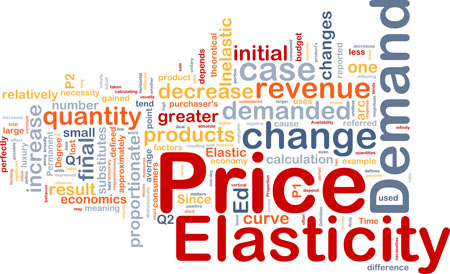Quantitative Evidence for Your Customer’s “Reasons to Believe”
Pricing Research is Essential…and Can Be Challenging as Well
One of the most challenging aspects of new product development and launch is getting the price right, especially if that product has few similar products in the marketplace. While it may be easy to price interior paint or cough medicine, it can be very challenging to price a new innovative product aimed at business or professional users, such as doctors, surgeons, or hospitals.
Pricing research is frequently called “price elasticity” research because what is being sought is a determination of how variable demand for a certain product is when its price is varied across a continuum. If the acknowledged desire for a product drops as its price increases, that price is said to be “elastic” within that range. If the stated desire for a product does not change as price increases, the price is said to be “inelastic” for that range.
Why do your customer desire your product? It is because your product possesses capabilities that offer value that increase the likelihood that they will accomplish their goal or goals. Defining this value is beyond the scope of this article, but suffice to say it can be product attributes, capabilities, or claims you make that your customer cares about. These qualities can more specifically be referred to as the “utility” of your product to your customers. And in order for them to purchase, they must believe this utility is attainable, or at least mostly attainable. The support you offer to ensure this believability can be called “the Reasons to Believe.” Here, we will show how your stated support for your product’s benefits or utility can be quantified.
Price Elasticity Research is a Commentary on the Uniqueness of Your Product’s Value to Your Audience
Products offered to the markets are a composite of their utility to your customers and prospects. Thus, quantifying whether their likelihood to purchase will vary with price is a function of offering the components of your product’s value as a total package.
Choice-based modeling is an example of this approach. In a discrete choice conjoint exercise, a number of attributes of a product are offered in different configurations, and respondents are asked to choose between the product composites to decide which they would purchase at different price levels. This provides insight into which attributes are most valued and the degree to which each are preferred at these different prices.
The Attributes Can Be (Almost) Anything Quantifiable about Your Product
As mentioned, these can be features, but they can also be claims, capabilities, or perceived benefits. This marketing stage is where you can tie together an understanding of which characteristics are affect your customer’s decision to purchase as well as your product’s price elasticity, and the useful messages that go along with this research.
Attributes which are strong contributors to purchase intent and are also price inelastic effectively define the focus of your messages, your reasons to believe.
Digging Deeper
If you are familiar with the process of building a model to represent your product as a series of attributes, real or perceived, that can be described by features, capabilities, and claims, this way of thinking is straightforward. To really understand your sales, pricing, and the perception of your product’s value, you need to go one level deeper than this basic description to the articulation of the evidence that supports their value to the customer. This series of questions can be programmed into any quantitative survey exercise that involves a choice-based conjoint exercise or similar method.




